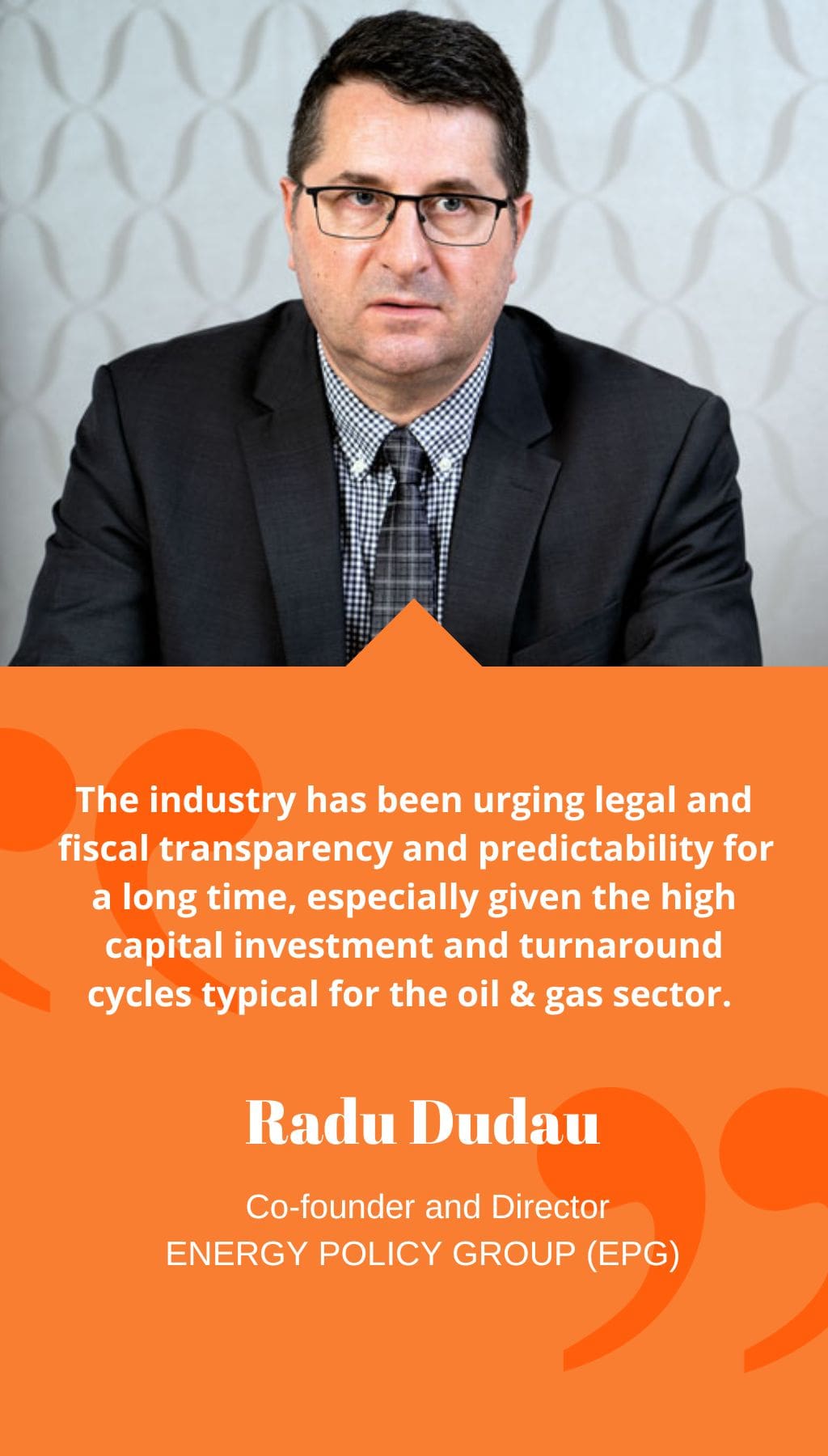
- Romania | 10 April 2019

Could you provide our readers with an introduction to Energy Policy Group since its founding in 2014?
After completing an academic career ranging from physics to political science across Europe and the United States, I started working in the field of international relations, specifically in the energy sector and energy geopolitics. At that time, in the mid-nineties, Romania was facing a gas crisis due to trade relations with Ukraine and Russia. The industry needed independent and quality analysis, and this led to the establishment of EPG in March 2014.
What is the current situation of Romania’s energy sector, including oil, gas, and renewables?
Romania, situated in South-Eastern Europe, has an abundance of natural resources. The country has been exploiting and industrializing oil for more than a century and a half and gas for over a century, making it a pioneer in the region. Coal followed, on a large scale, in the 1950s, as well as hydro-energy and nuclear power in the 1990s. Since 2010, there has been a boom in investments in renewables such as wind and solar. Romania has a massive natural potential in the latter field, with plenty of room for growth and high economic gains compared to what has been achieved so far. Overall, Romania has what has been referred to as a “diversified and balanced energy mix.”
Substantial investments are necessary in exploration & production, as well as energy distribution, transportation, and consumption. Romania, like many other countries, is attempting to transition to a more sustainable energy system supported by smarter, digital infrastructure, as is to be expected of any forward-looking country in the 21st century.
What are your thoughts on the Romanian National Energy-Climate Plan 2021-2030, which outlines some of the government’s priorities and commitments?
Given the wealth of natural resources to back it up, the government could be more ambitious in the area of renewables. In this context, it is challenging to understand why our targets for renewable energy sources stand at 27.9%, below the 32% EU target. Hydropower is already the backbone of the country’s energy system, and instead of unrealistic growth projections, it could much better use refurbishing work. Recent studies show that solar and wind capacities have the best potential for growth.
What are the expected repercussions for the energy sector of the Government Emergency Ordinance (GEO) 114/2018, which the government recently passed?
The industry has been urging legal and fiscal transparency and predictability for a long time, especially given the high capital investment and turnaround cycles typical for the oil & gas sector. Romania has not been the best in this regard. The GEO 114/2018 came as a shock to the industry and is likely to have severe consequences across the board. It puts market liberalization of gas and electricity on hold until 2022 and introduces an additional 2% tax for any trading and supply activities, practically blocking new investments and resulting in companies having to lay off qualified personnel. This legislation affects not only the energy industry but also banking, IT & communications, constructions, and several other areas, discouraging future investment and placing current projects on hold.
The new legislation sets Romania on a contrary path to the rest of the EU. My assessment is that we are facing a legislative anomaly fueled by the need to supplement tax income, that Romania will soon be sailing on calmer, more predictable waters, and that the GEO 114/2018 will ultimately be rescinded.
What are some of the strengths Romania can leverage in its future development to achieve energy self-sufficiency?
When Romania’s regulatory framework regains its balance and predictability, there are several sectors that can experience bright growth prospects. Gas is particularly a strength that must be honed by industry experts and state authorities. They can forge a long-term win-win deal between state and industry. Additionally, renewables should be developed further and can go hand in hand with natural gas. In addition, there is a need for a smart and flexible infrastructure, which must be treated as a priority. With the right resources, a better developed infrastructure, and a favorable regulatory environment, the only way for Romania is forward.
What is your vision for EPG and for the country’s industry overall in the next two years?
EPG believes in a smart and efficient energy industry that integrates Romania’s energy markets in the EU markets, away from an isolationist mentality. EU funds can support investment in clean energy, and there is room for improvement in the country’s energy efficiency, which is a priority domain for both the government and investors. The government also has grand plans, including the construction of two new nuclear reactors at Cernavodă, backed by Chinese investors. The Energy Ministry plans to build a large hydro pumped storage plant, among several others. The main challenge up to 2030 is the planned phase-out of the coal sector and its replacement with sustainable and affordable alternatives. With the right investments, Romania can also promote efficient, high-quality energy solutions and services. Lastly, Romania has to stay attuned to European priorities to ensure that it stays in line with the rest of the EU.














